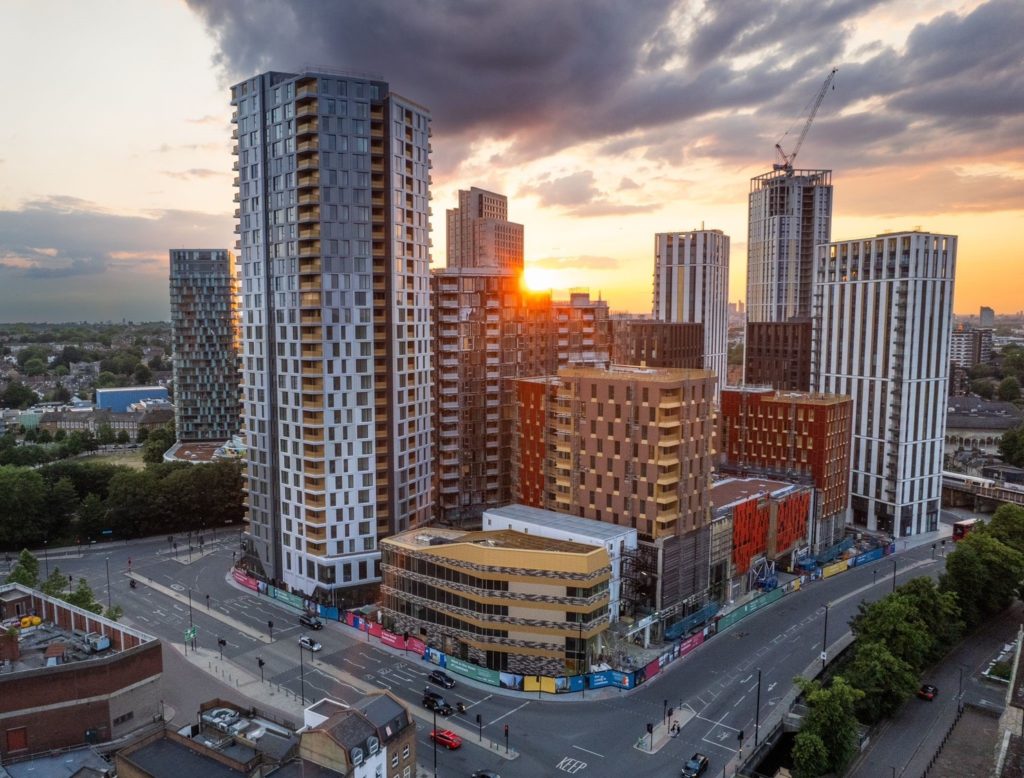Lewisham Gateway Part III: Delivering a better place, from start to finish
28.11.23 4 min read

20 years of delivering connected, people-focused regeneration.
We embarked on our journey at Lewisham Gateway 20 years ago, to deliver a place that was connected and focused on community.
Our approach has delivered a new beating heart for Lewisham, packed with homes and amenities: over 1,000 new homes, 25,000 sq ft of shops, cafes, and restaurants, 15,000 sq ft of affordable office space, a gym, a 9-screen multiplex cinema, and new public amenity spaces.
Part III: Delivering a better place, from start to finish
Delivering successful places, with an emphasis on sustainability, community and quality takes time. In the case of Lewisham Gateway, it has been 20 years of effort and partnership.
Since the project was first conceived, technology, construction methods, and best practice have evolved. This is not something that is easy to keep up with.
Working with construction partners over multiple phases – John Sisk & Sons, VolkerFitzpatrick, and more recently, Balfour Beatty – we’ve prioritised delivering better, considered design and waste minimisation at every stage.

Chris Coxall and the team at Balfour Beatty
For example, over 20 years of development, sustainability has grown in importance and urgency. As we’ve progressed, so has our awareness, understanding and delivery of sustainable innovation.
Through sustainable construction on phase two alone our construction partners Balfour Beatty estimate we have prevented 826 tonnes of carbon from entering the atmosphere.
One of our first priorities was to install a purpose-built substation to provide grid-supplied power for construction. This meant we could avoid using diesel generators which are noisy and polluting.
Over the longer term we installed two energy centres on site. These both are served with combined heat and power engines. They generate renewable power while producing efficient heating and hot water.
This is much more sustainable than traditional power supplies, producing low carbon energy where excess heat isn’t lost and electricity doesn’t have to travel long distances.

Lewisham Gateway
Modern methods of construction have further enabled us to build efficiently and sustainably where possible. This included designing for and installing standard bathroom pods, utility cupboards, pre-packaged plant and installing unitised cladding.
These are not only quicker to build, as they are manufactured offsite, but we’ve selected products and finishes which are easily maintained and hard wearing. It ensures a longer lasting finish than traditional alternatives and will minimise extra work and cost over the long-term.
The extensive use of post-tensioned floor slabs in all the structures has also reduced the amount of concrete and steel reinforcement needed. It has reduced the amount of cladding required too.
In operation, we are leveraging state of the art zero carbon technologies within buildings to reduce energy consumption. For example, the new homes are highly efficient and have achieved exceptionally low air permeability, which will reduce heating bills for residents.
As technology and best practice has evolved, over 20 years, so have we. The result is a development, which is now more sustainable and of higher quality than when it was first conceived.
As the hoardings fall away on one of the UK’s most complex and demanding regeneration projects, the full value of Lewisham Gateway will become clear.